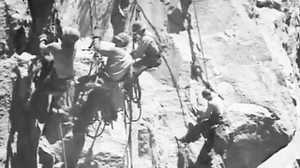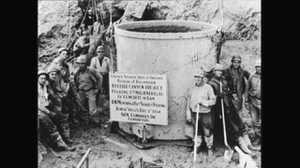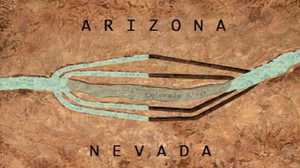Rising more than 700 feet above the raging waters of the Colorado River, Hoover Dam was called one of the greatest engineering works in history. 5,000 working men and their families came to live in the Nevada desert, all in search of a paycheck. The work was extremely dangerous, and done mostly without modern safety precautions.
-
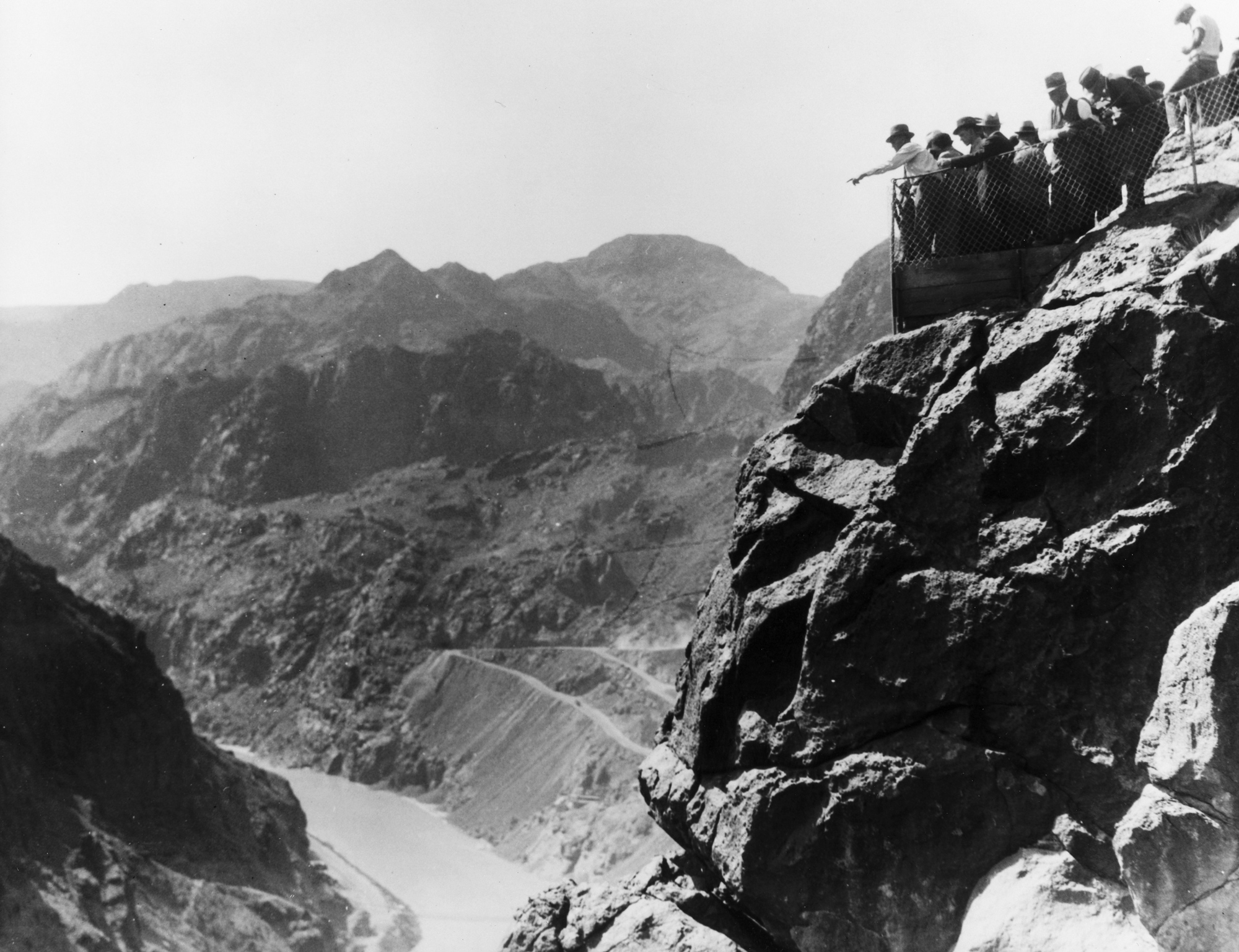
A group of surveyors point out a spot in the Canyon.
Credit: Nevada State Museum and Historical Society -
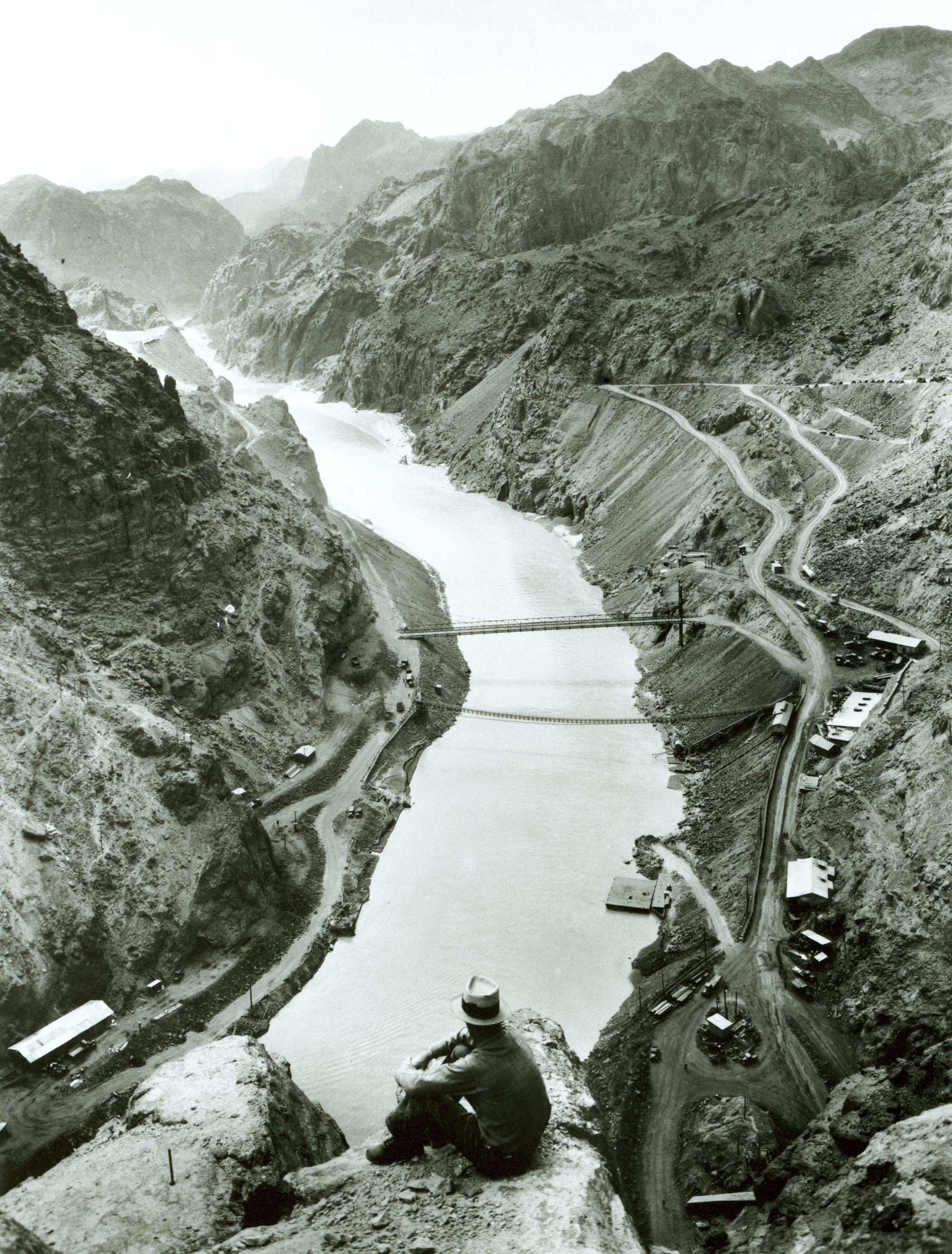
A worker taking a break while looking out at the progress below.
Credit: Bechtel Corporation -
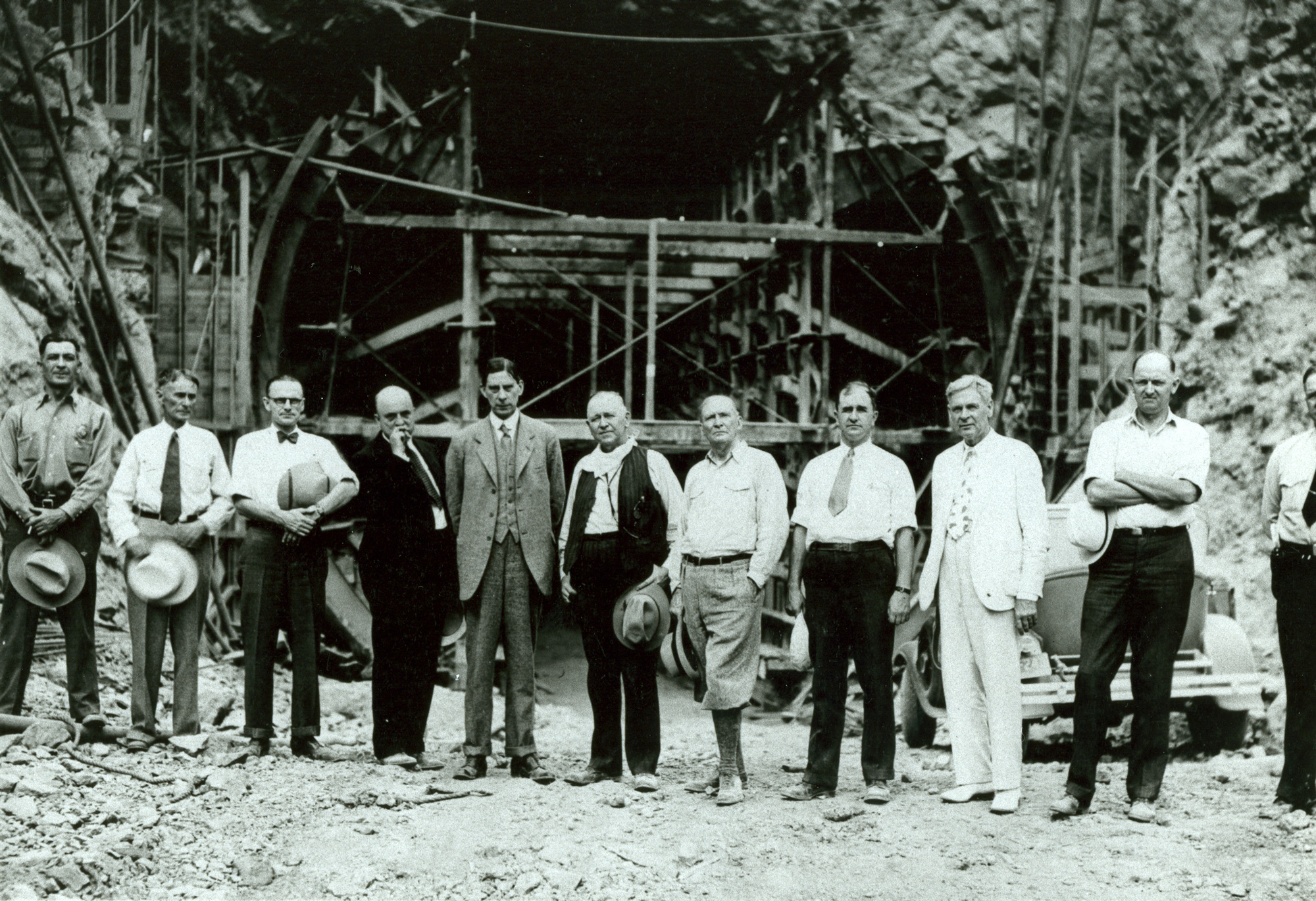
The Inspection party accompanying the Secretary of the Interior is photographed in front of the outlet portal of Diversion Tunnel Number 2. Pictured from left to right — William E. Stringfellow, Reservation Police, Sims Ely, City manager, Walker R. Young, Construction Engineer, Bureau of Reclamation, H.J. Kaiser, Board of Directors, Six Companies, Inc., Ray L. Wilbur, Secretary of the Interior, W.A. Bechtel, President, Six Companies, Inc, W.L. Honnald, Chairman of the Engineering Committee, Metropolitan Water District, S.D. Bechtel, Board of Directors, Six Companies, Inc, W.P. Whitsett, President, Metropolitan Water District, Frank T. Crowe, Construction Superintendent, Six Companies, Inc. September 23, 1932
Credit: Bureau of Reclamation -
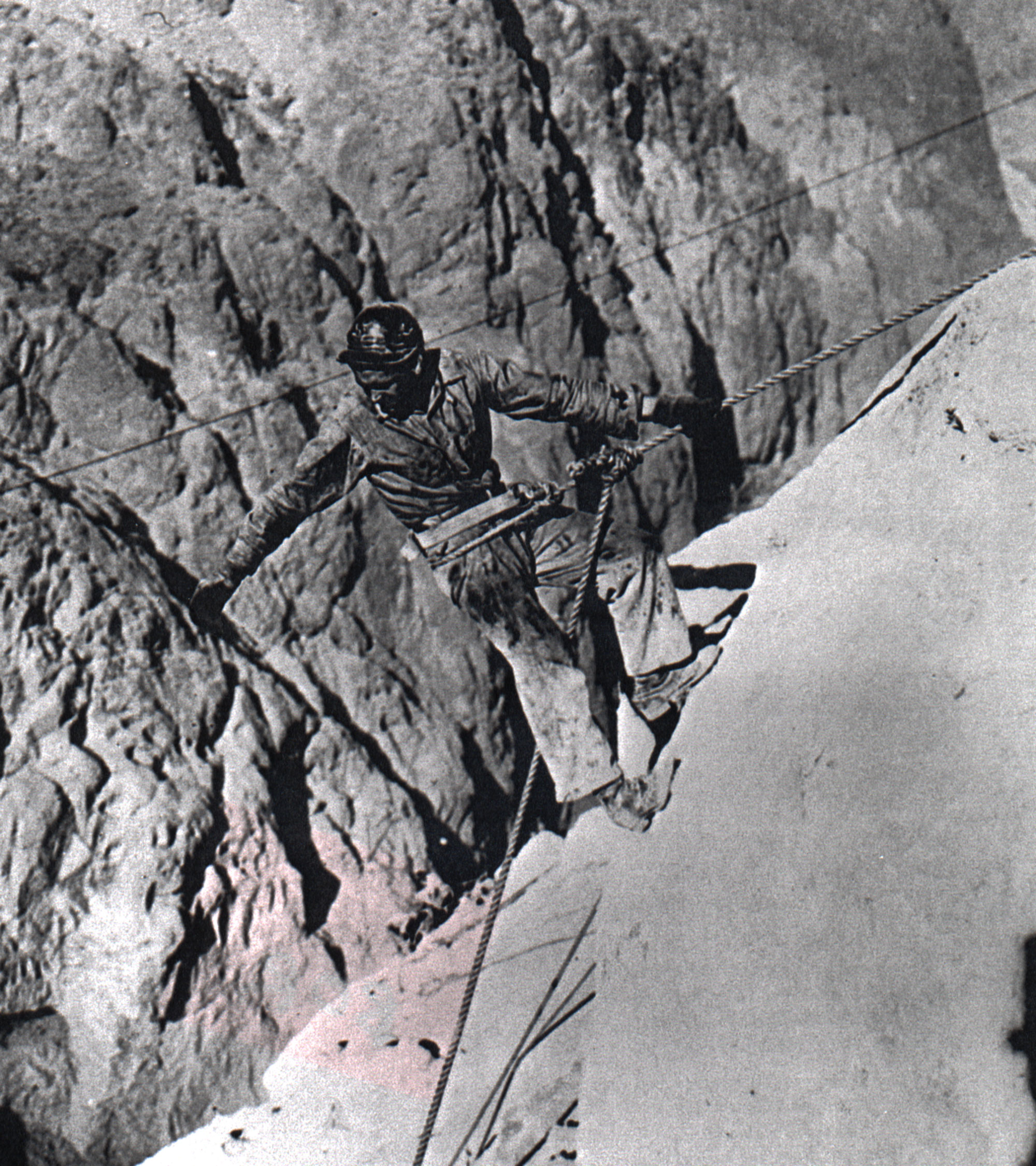
A High Scaler going over the side on the Arizona rim of Black Canyon. High Scalers’ work involved swinging from point to point high on the canyon walls to clear away all loose rock before work could begin. The area to be cleared extended for some distance above and below the actual dam site, and this was hazardous work for which they received higher pay. Note the safety belt, rope, and homemade protective headgear. November 16, 1932
Credit: Bureau of Reclamation -
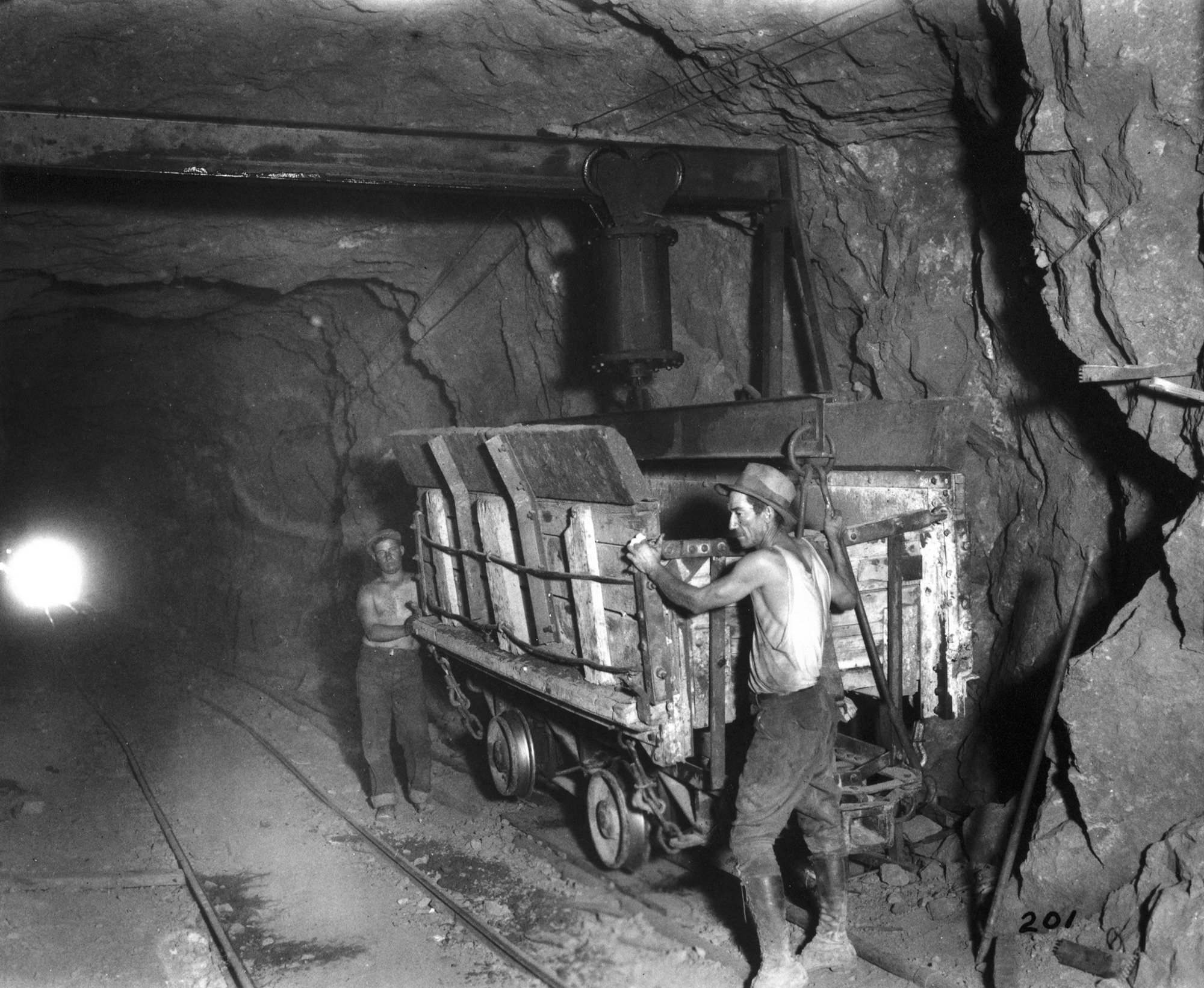
Before work on the dam could start, the river had to be diverted by four 50-foot-wide tunnels, drilled through the solid rock walls of the Black Canyon.
Credit: Bechtel Corporation -
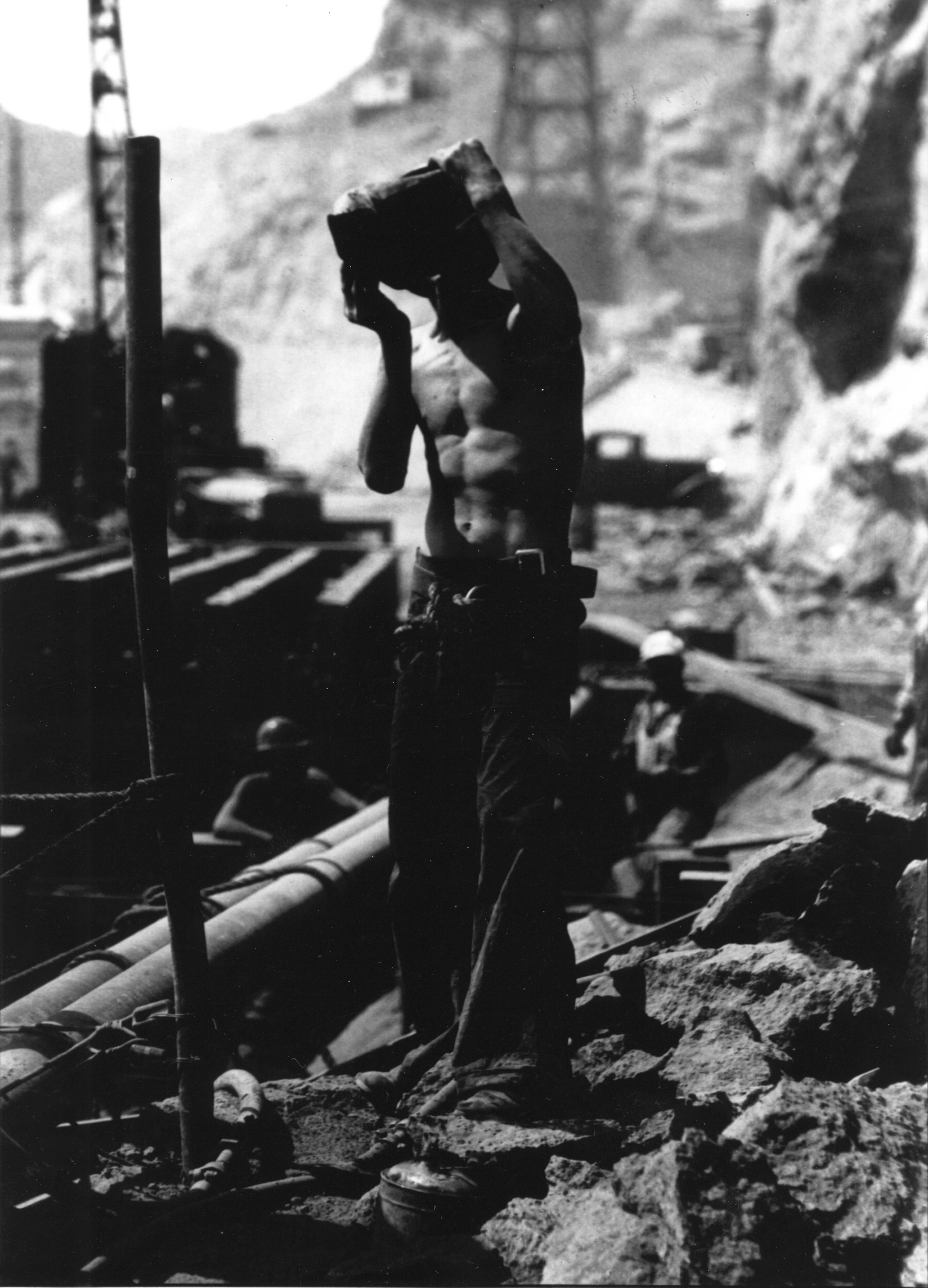
A worker drinks from a water bottle. Temperatures inside the canyon often reached 120 degrees during the summer.
Credit: Library of Congress -
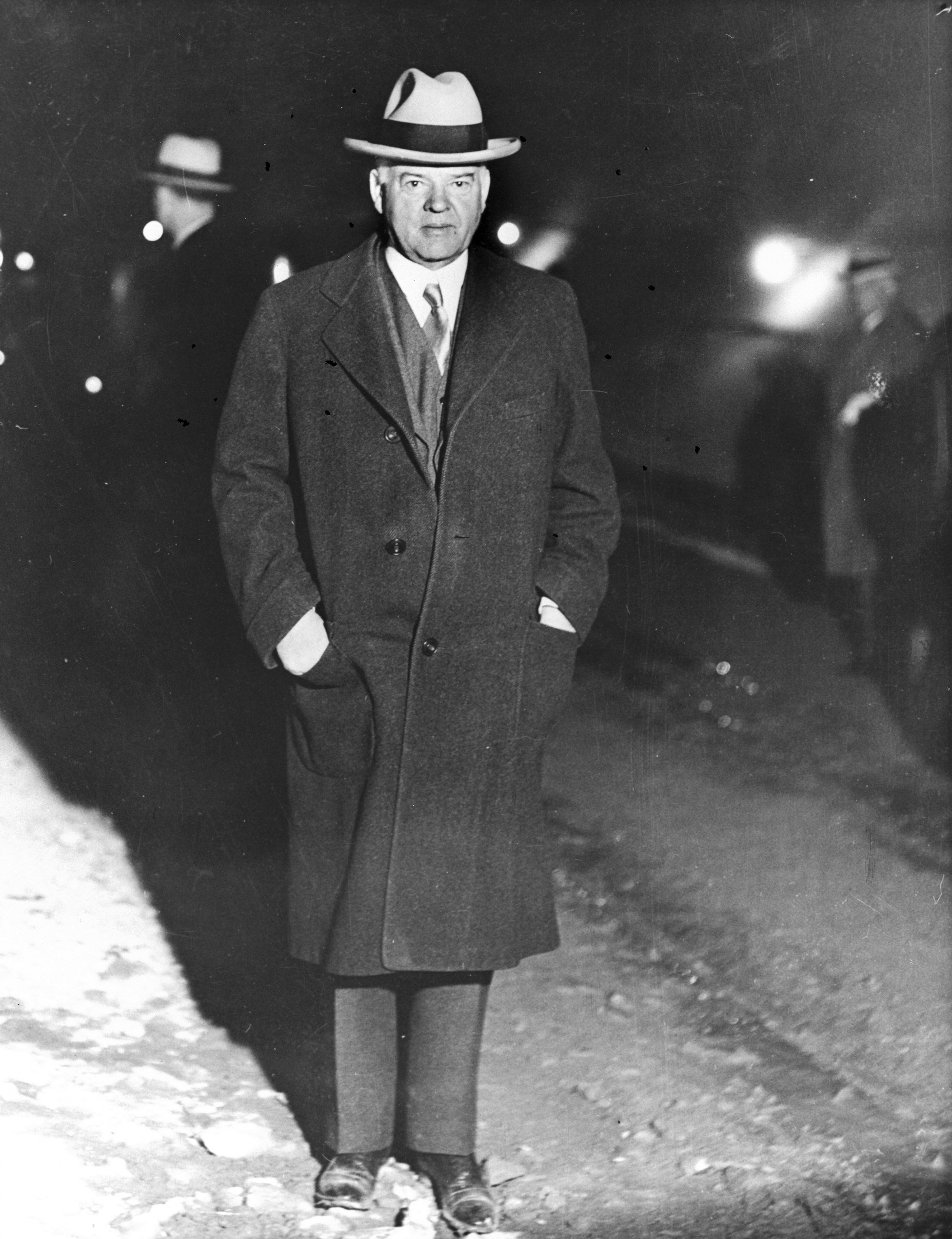
President Herbert Hoover visiting diversion tunnel #2 on his only visit to Hoover Dam, just after losing his bid for re-election. November 12, 1932.
Credit: Bureau of Reclamation -
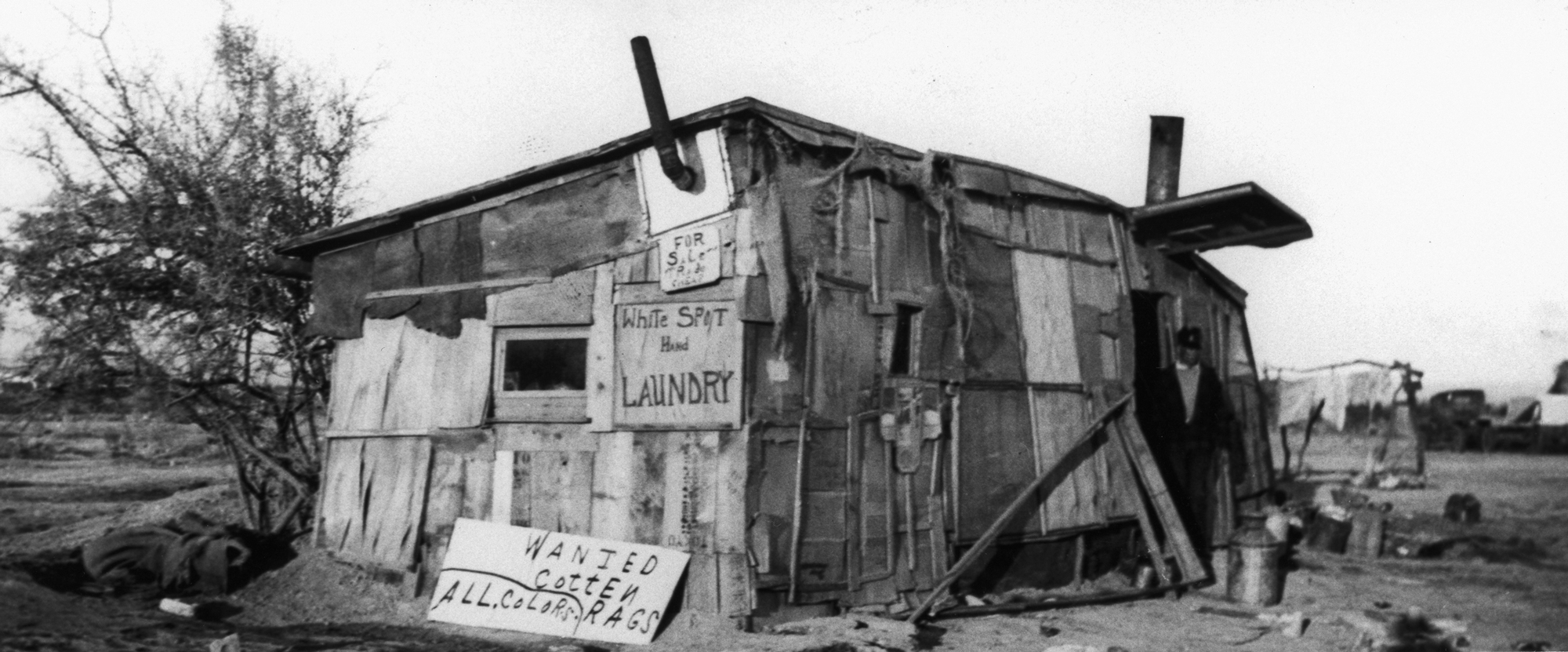
A squatter offers laundry services in his desert shack. When the Boulder Canyon Project was announced, thousands of unemployed men and their families flocked to the desert desperate for work, but construction would not begin for another three years. With no money to move elsewhere, many people settled in makeshift homes in North Las Vegas. This area would become known as 'Hooverville.’ 1930-31.
Credit: Bureau of Reclamation -
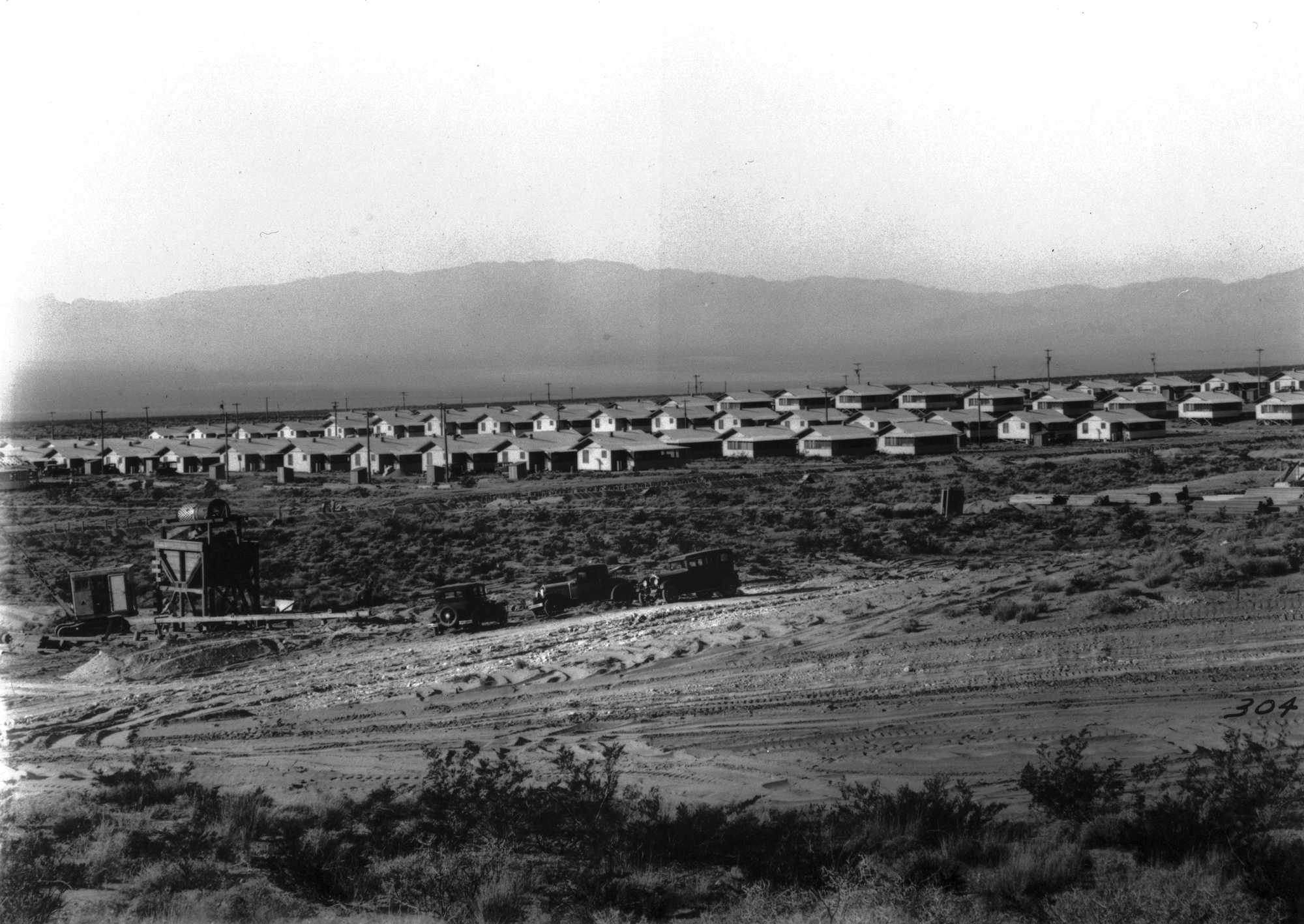
Essentially a government reservation, Boulder City was constructed in 1932 for dam workers and their families, and it included dormitories, small cottages and a mess hall that served 6,000 meals a day. Its citizens eventually created a small civic community, building makeshift schoolhouses, a library and a church, but no African American, Native American or Hispanic dam workers were allowed to live inside the newly-manufactured city.
Credit: Bechtel Corporation -
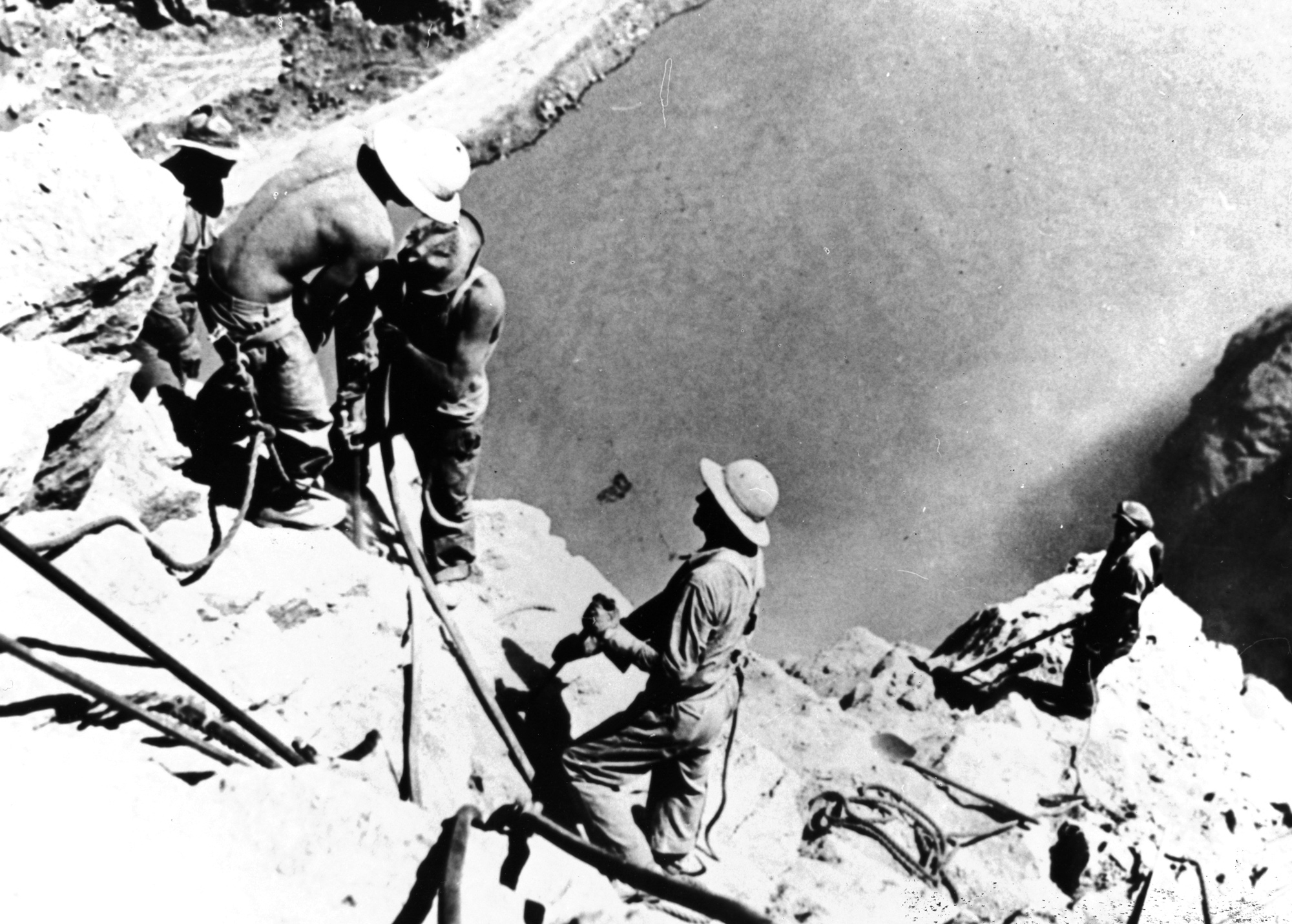
High Scalers drill into the canyon wall 500 feet above the Colorado River in Black Canyon at the Hoover Dam site. April 1, 1932.
Credit: Bureau of Reclamation -
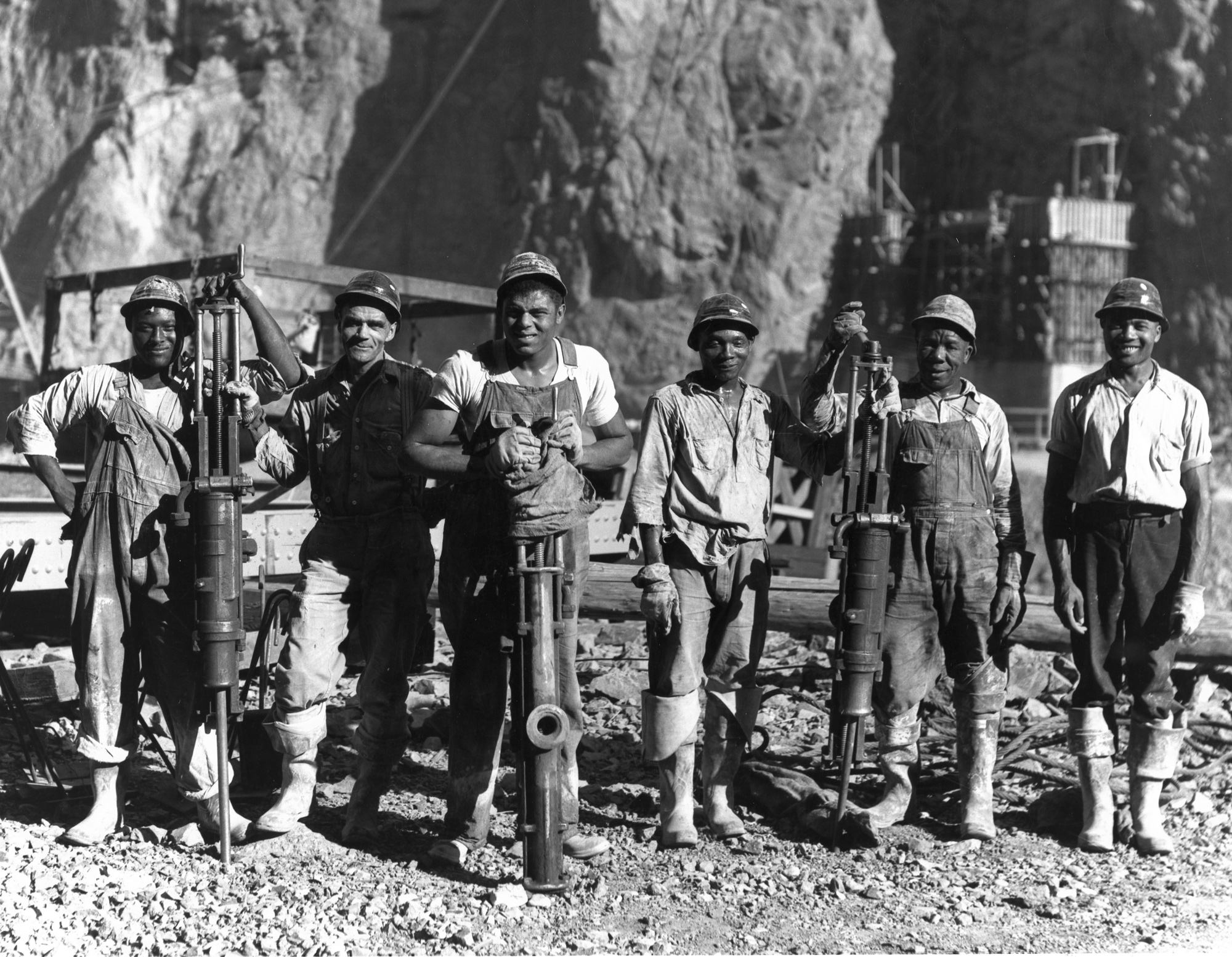
These drillers were some of the few African American workers on the construction site. In 1933, there were only 24 African Americans in a work force of 4,000 men.
Credit: Bureau of Reclamation -
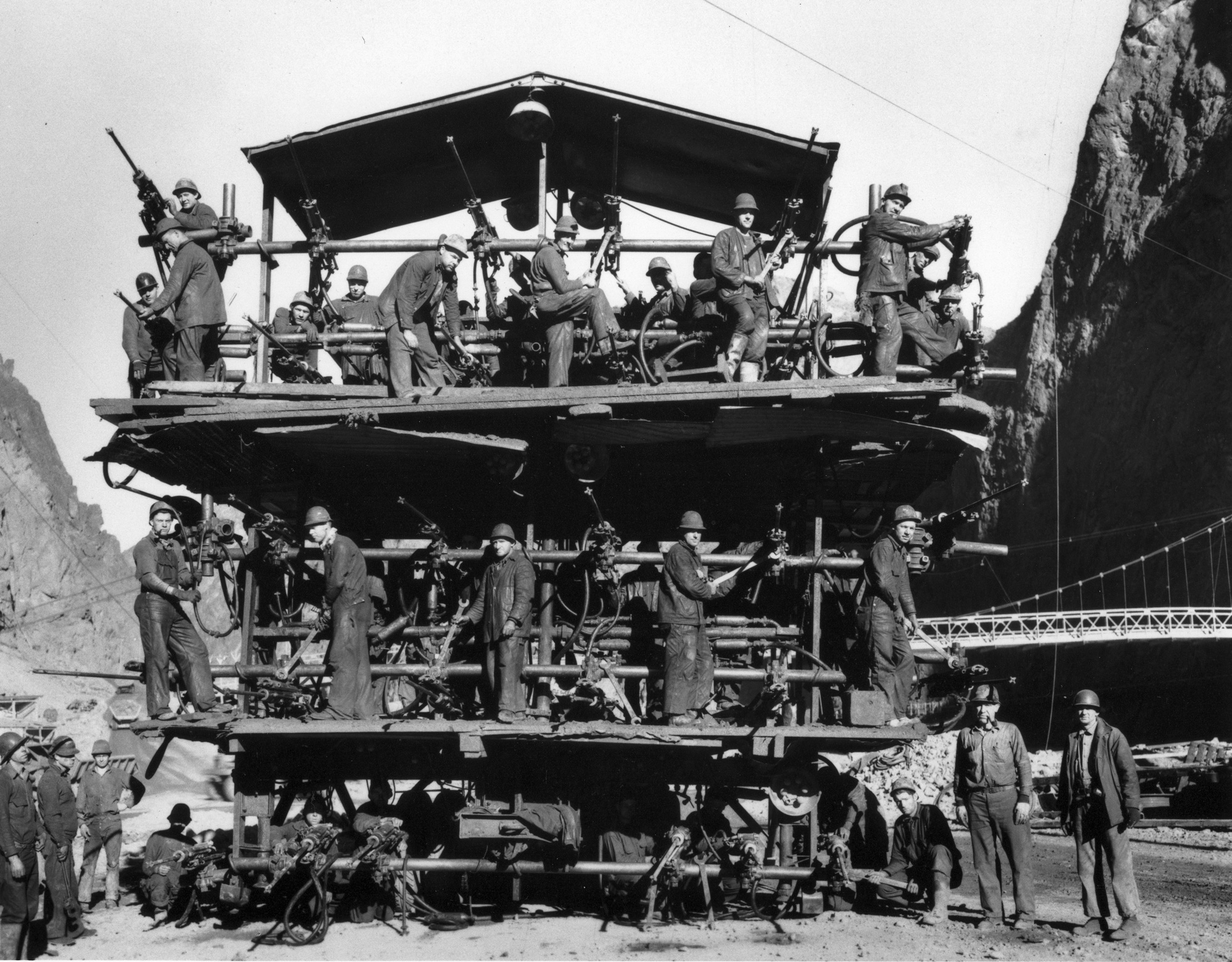
In the upper portion of the diversion tunnels, the business end of truck-mounted drilling rig is shown in the position in which it approaches the heading. Each driller is responsible for a specified drilling area. Each set of charges is detonated in precise spilt second sequences and cleared approximately 17 feet at a time. April 20, 1932.
Credit: Bechtel Corporation -

Starting work on a diversion tunnel.
Credit: Bechtel Corporation -
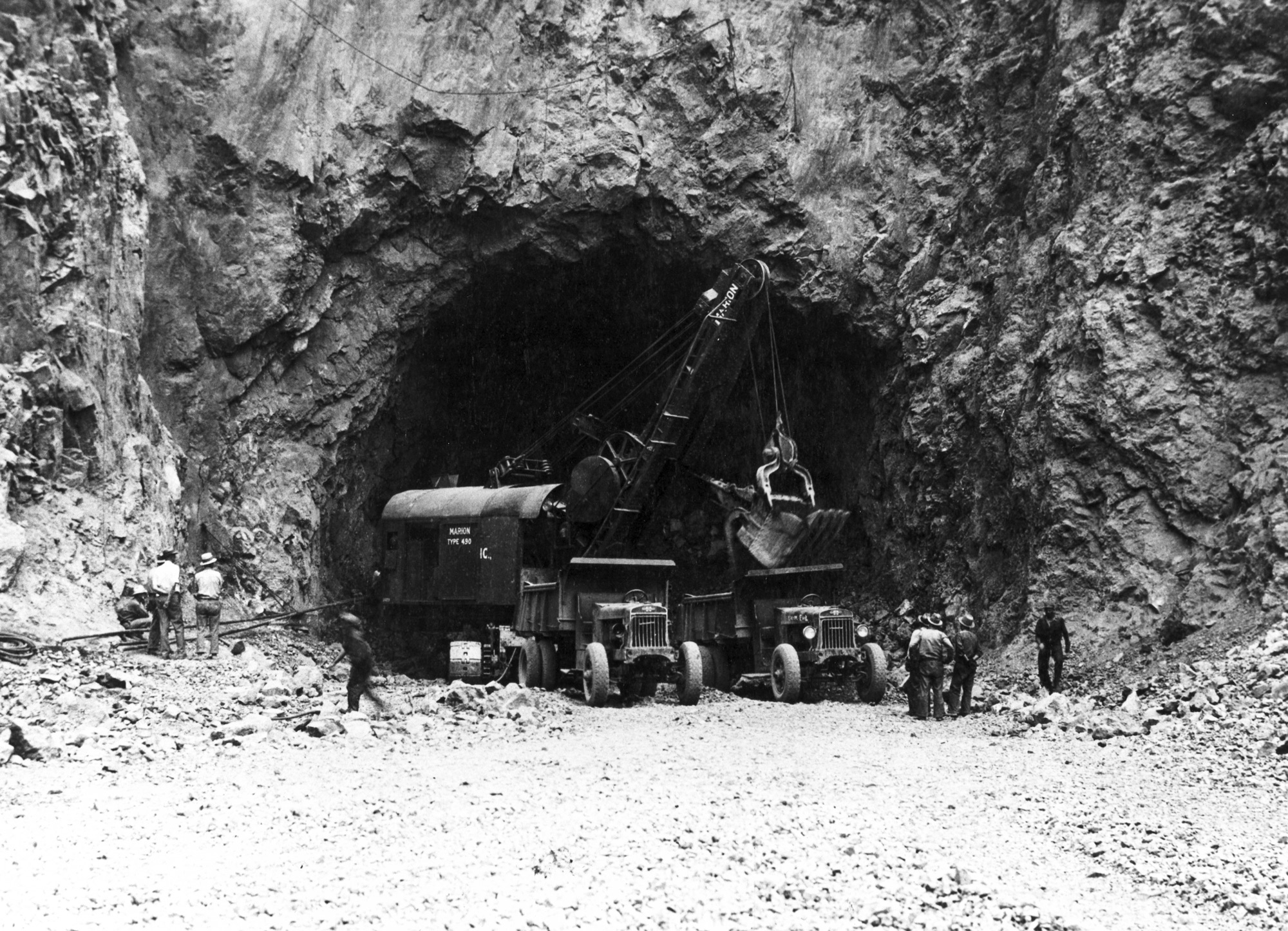
A shovel excavates muck in the outlet of the Arizona Spillway Tunnel. The view shows the upper 36-foot full and 56-foot bore.
Credit: Bureau of Reclamation -
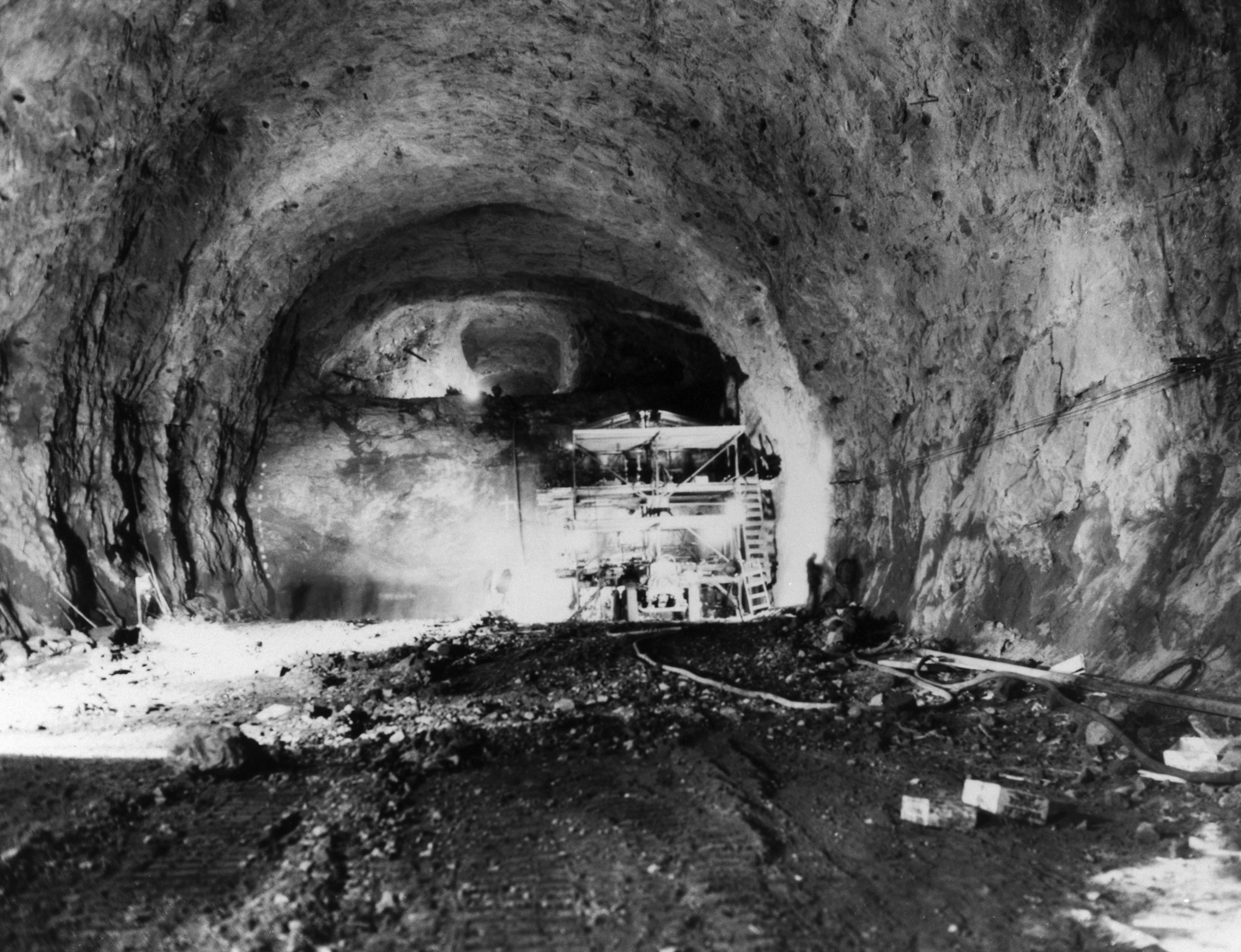
The interior of a diversion tunnel.
Credit: University of Las Vegas -
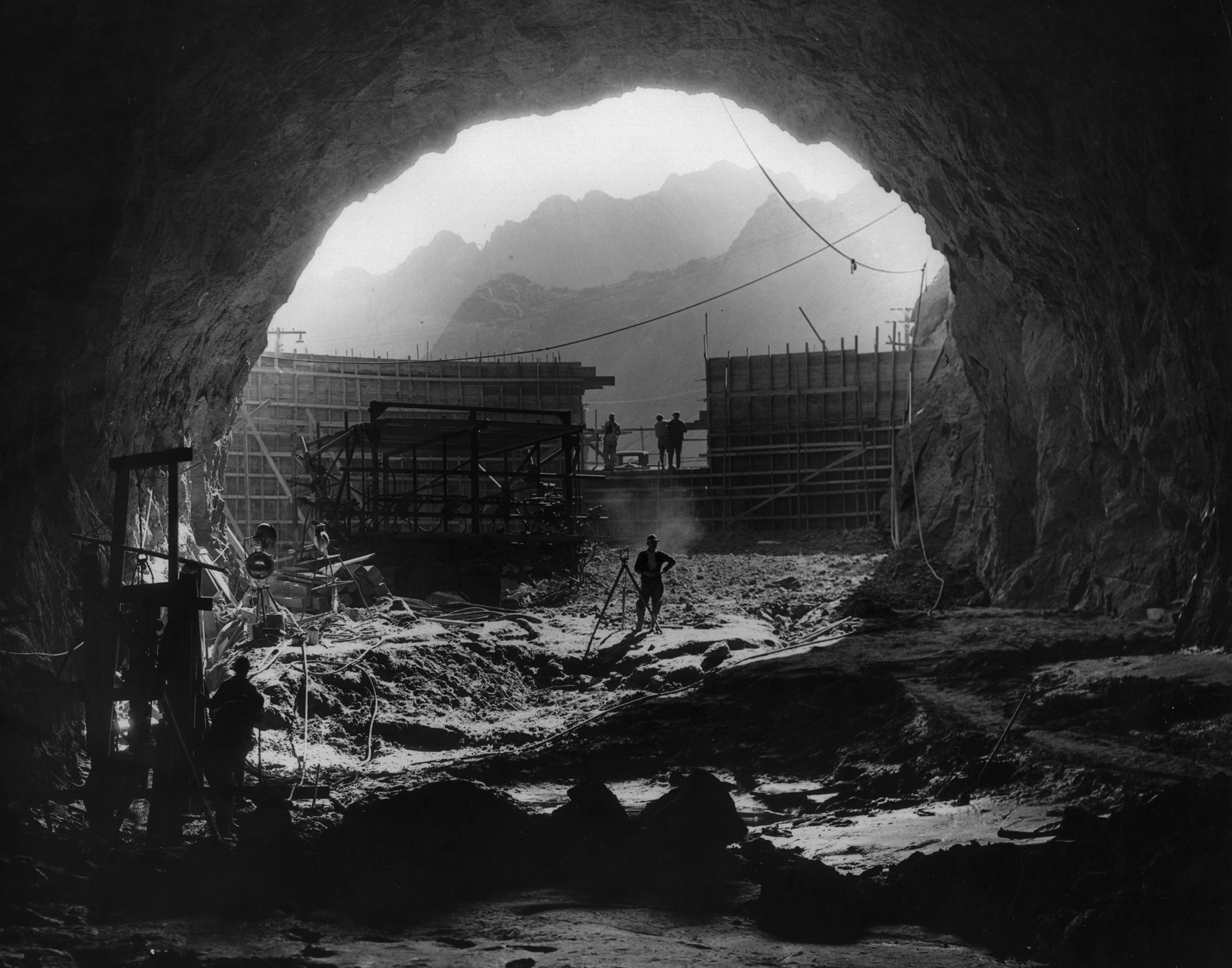
The view from within the outlet portal of the Nevada Penstock tunnel showing the form work for the cofferdam being erected by Six Companies, Inc. Note the port through which trucks will operate and which may be closed by steel gates in the event of high water. February, 28, 1932.
Credit: Bureau of Reclamation -
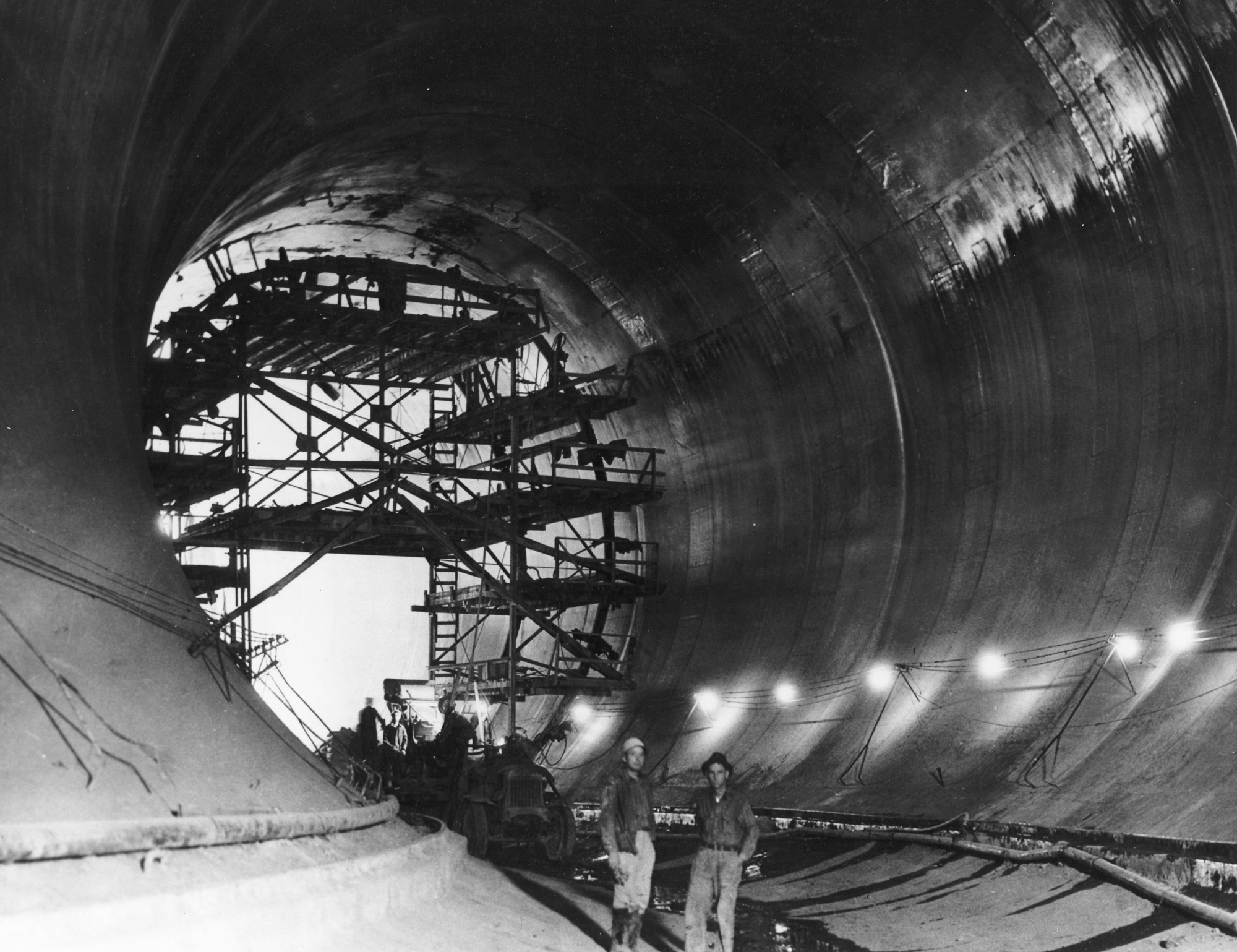
The completed tunnel at the intake portal of diversion tunnel No. 4, looking toward the entrance. The pressure grouting jumbo can be seen in operation. October 26, 1932
Credit: Bureau of Reclamation -
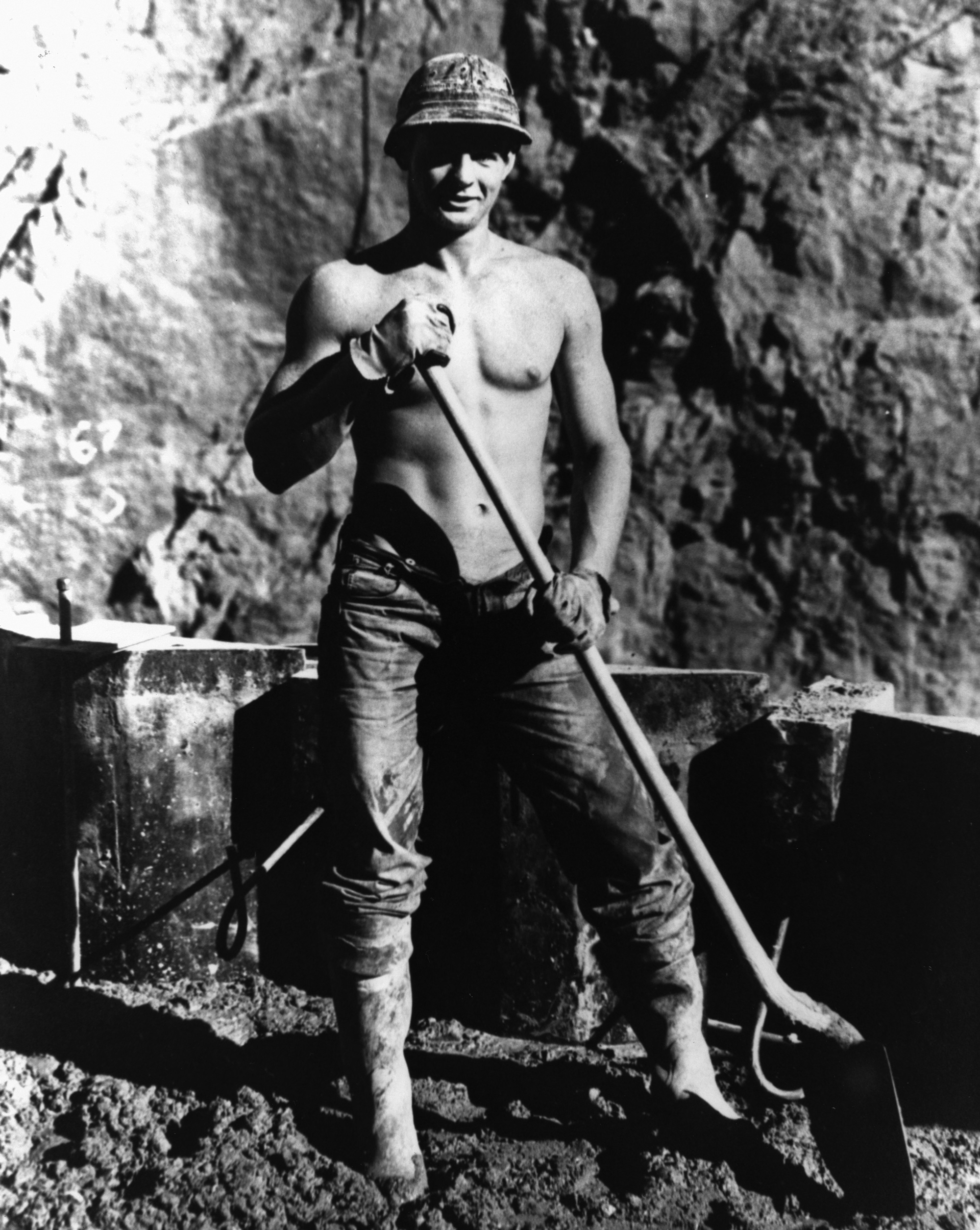
A typical Boulder Dam laborer. c. 1934.
Credit: Library of Congress -
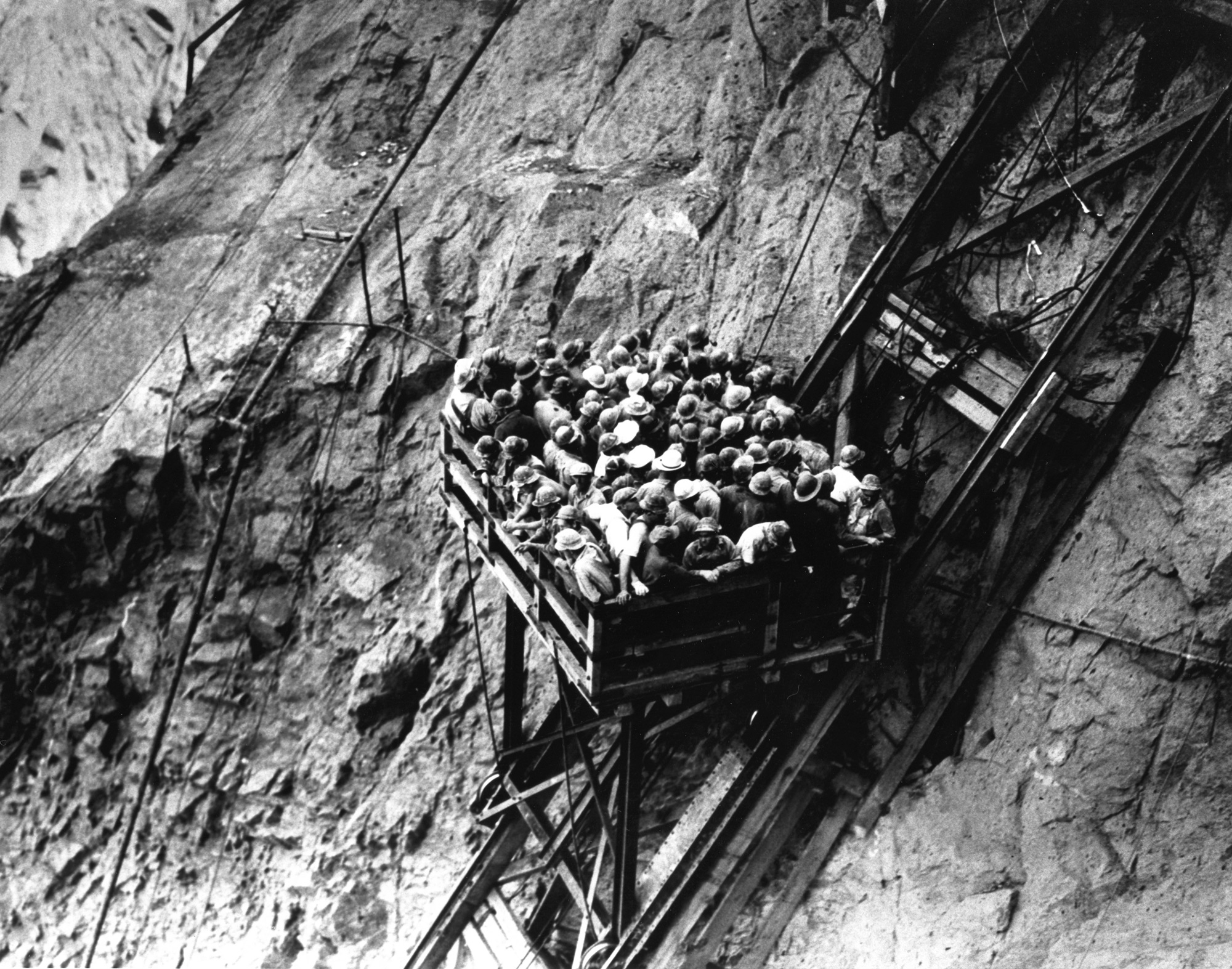
Workmen riding an inclined rail skip from the Nevada rim to the top of the dam. April 6, 1934.
Credit: Bureau of Reclamation -
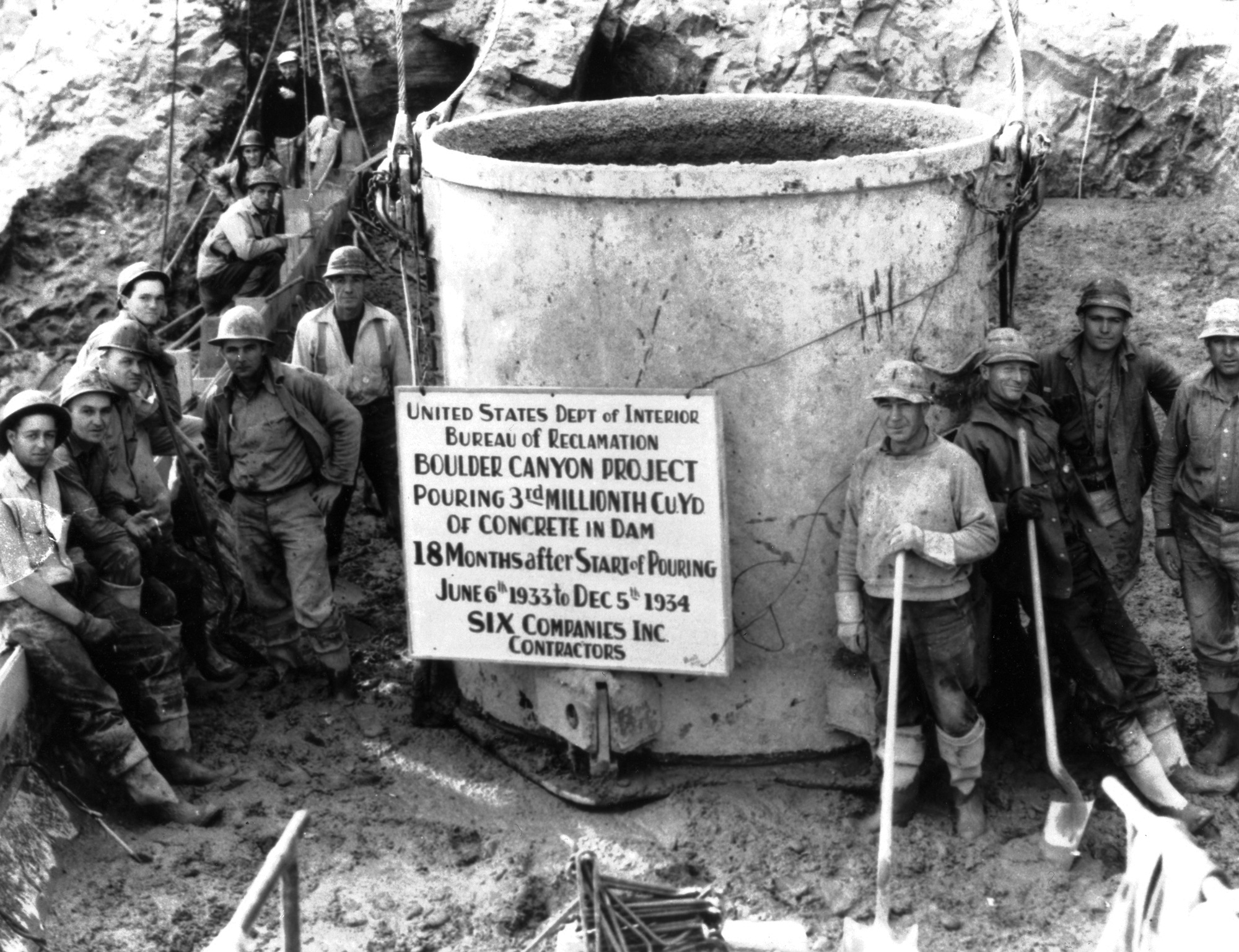
Workers commemorate their success in sticking to the incredibly tight construction schedule — pouring three million cubic yards of concrete in just 18 months. December 5, 1934
Credit: Bureau of Reclamation -
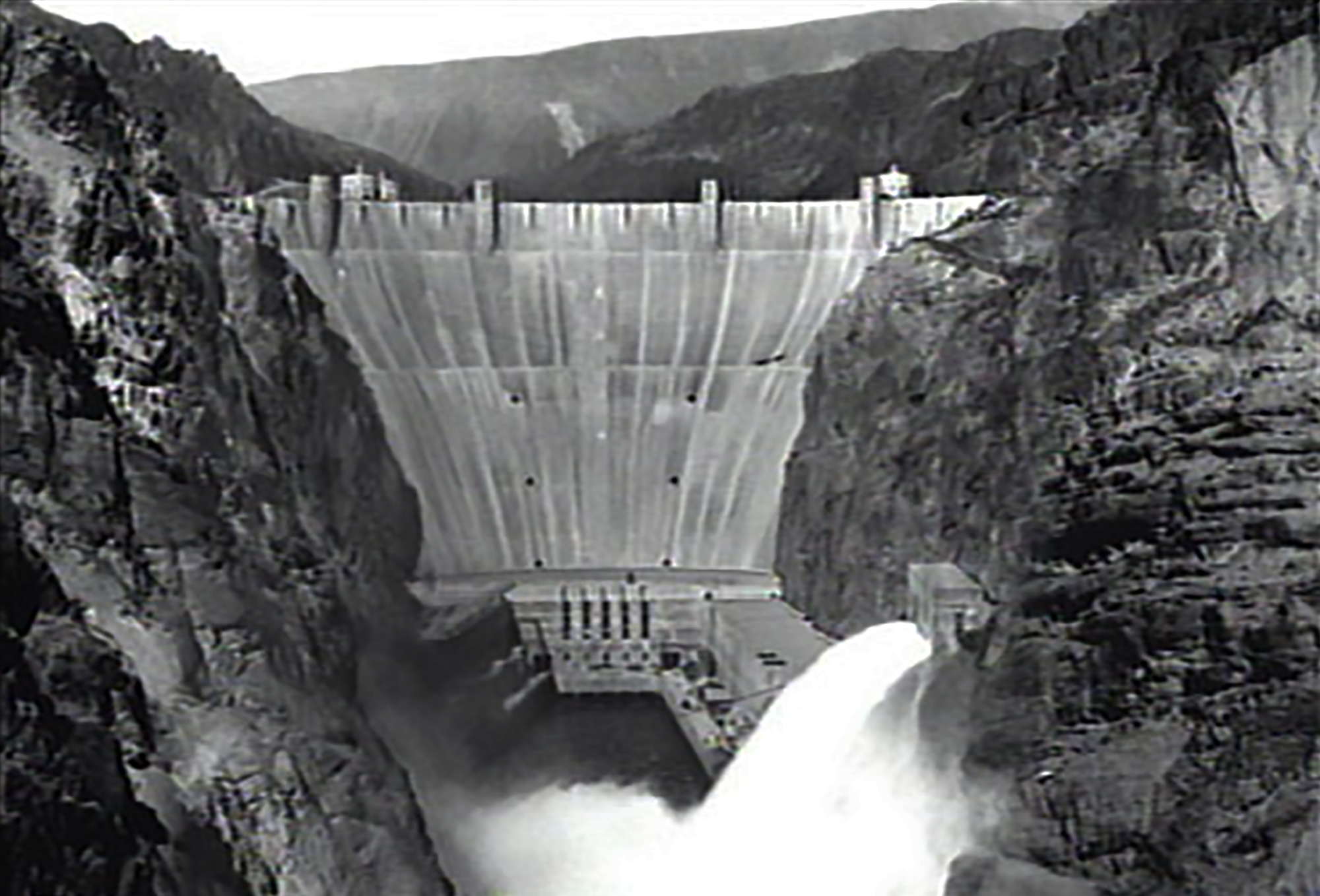
The Hoover Dam started impounding water in Lake Mead in February of 1935, and the last concrete was poured on May 29.
Credit: WGBH




